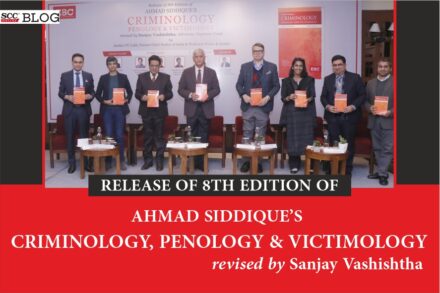Supreme Court: In an appeal filed against the Judgment passed by the Gujarat High Court, wherein the Court in an alleged copyright infringement, set aside the order of the Commercial Court allowing an application under Order VII Rule 11 of the Code of Civil Procedure, 1908 (‘CPC’), the division bench of Surya Kant* and N. Kotiswar Singh, JJ. upheld the decision of the High Court in rejecting the application under Order VII Rule 11 of the CPC. Furthermore, the Court directed the Commercial Court to deliver its decision on the pending application for an interim injunction filed by Inox within a period of two months. The Court also instructed the Commercial Court to conduct a trial and determine the true nature of the Proprietary Engineering Drawings based on the test outlined in this judgment, as well as address the other related IP right infringements claimed by Inox. The Commercial Court was given a timeline of one year to complete the trial, acknowledging the significant judicial time already wasted on this matter.
Background
The parties to the appeal are, inter alia embroiled in a dispute concerning the purported infringement of intellectual property rights in relation to the designing and manufacturing of the internal parts of Cryogenic Storage Tanks and Distribution Systems which are mounted on Trailers and Semi-Trailers, to effectively transport industrial gases, liquified natural gas (‘LNG’) and such like substances.
The dispute arose when Inox India Limited (‘Inox’) filed Trademark Suit against Cryogas Equipment Private Limited (‘Cryogas’) and LNG Express India Private Limited (‘LNG Express’) in 2018, alleging copyright infringement of two distinct types of intellectual property: (i) Proprietary Engineering Drawings related to LNG Semi-trailers and (ii) Literary Works used to create these drawings. Inox sought various reliefs, including a declaration of infringement, a permanent injunction, destruction of infringing materials, and damages of Rs. 2 Crores.
In response, LNG Express filed an application under Order VII Rule 11 of the CPC, seeking the rejection of the suit, arguing that the drawings qualified as ‘designs’ under the Designs Act, 2000, and thus could not be protected under the Copyright Act. The Commercial Court initially upheld LNG Express’ application rejecting the plaint and the interim injunction.
Inox appealed to the High Court, which, on 13-03-2024, set aside the Commercial Court’s decision, ruling that the court had erred in dismissing the suit. The matter was remanded for fresh consideration. However, on 03-05-2024, the Commercial Court once again rejected the plaint, prompting Inox to file a further appeal. In response, the High Court, in the Impugned Judgment, set aside the Commercial Court’s orders, citing the following reasons:
-
The Commercial Court had wrongly assumed that the Proprietary Engineering Drawings were a ‘design’ under Section 2(d) of the Designs Act and had been used in the industrial process more than fifty times, thereby excluding them from protection under the Copyright Act.
-
LNG Express’ application under Order VII Rule 11 of the CPC was rejected, and the Suit was restored to its original number.
-
Inox’s application for an interim injunction under Order XXXIX Rules 1 and 2 of the CPC was reinstated.
-
The High Court directed that the interim injunction application be decided by the Commercial Court on its merits independently and expeditiously, ideally within eight weeks.
Thus, leading to the current appeals.
Issues, Analysis and Decision
What are the parameters for determining whether a work or an article falls within the limitation set out in Section 15(2) of the Copyright Act, thereby classifying it as a ‘design’ under Section 2(d) of the Designs Act?
The Court comprehensively analysed the current IP statutory framework, and noted that despite the clear language employed in the provisions of the Copyright Act, 1957 and the Design Act, 2000, a small vantage point of intersection exists wherein a ‘design’ shares commonalities with ‘artistic works’ such as paintings or drawings, that may be accorded copyright protection.
The Court also note of Section 15(1) of the Copyright Act, which explicitly states that a ‘copyright’ shall not subsist in a ‘design’ protected under the Designs Act. This provision thus establishes that once a ‘design’ is registered, any copyright protection ceases to exist. Whereas, any design which is capable of being registered under the Designs Act, if not registered, then the copyright protection in such design would terminate once that design is applied to any article and reproduced in excess of 50 times by an industrial process, either by the owner or a licensee.
The Court observed that the lines between copyrightable artistic works and designs appear blurred due to their inherent overlap. Simply put, some designs may qualify for copyright protection, while certain artistic works may lose such protection once they are industrially applied. This complexity is further heightened by the express legal bar on designs from availing long-term copyright protection.
The Court further examined the parameters adopted across various jurisdictions, like (i) the approach adopted by Courts in India; (ii) the factors employed by courts in the United States of America (‘US’); and (iii) broader international principles that provide guidance on the interplay between copyright and design protection.
The Court concluded that the expression “artistic work” under Section 2(c) of the Copyright Act carried a broad and inclusive meaning. It held that such works could even encompass abstract creations, including a few arbitrarily drawn lines or curves, whether in two or three dimensions, and regardless of visual appeal. The Court further clarified that the creator or holder of such an artistic work was entitled to protection under Section 14(c) of the Copyright Act, which includes the exclusive right to reproduce the work in any material form, including transforming a two-dimensional work into three dimensions or vice versa. However, the Court clarified that if such reproduction is carried out through an industrial process, whether manual, mechanical, or chemical, and results in a finished product that appeals to the eye, then the features of shape, configuration, pattern, ornament, or composition of lines or colours applied to that product would constitute a design under Section 2(d) of the Designs Act.
The Court highlighted that the mere intent to produce an original artistic work is not determinative of whether it qualifies for protection under the Copyright Act or the Designs Act. Instead, the legislative intent is to harmonize both statutes. While an artistic work may initially qualify for copyright protection, its commercial or industrial application, i.e., when a design is derived from the original work for industrial production is governed by the limitations under Section 15(2) of the Copyright Act. In such cases, protection is only available if the design is registered under the Designs Act.
The Court concluded that the original artistic work, which initially enjoys copyright protection, does not lose that protection merely because a design derived from it is industrially applied to create a product. While the term artistic work encompasses a broad range of creations, the definition of design is more specific. A design is restricted to particular features such as shape, configuration, pattern, ornamentation, or composition of lines or colours, which are applied to an article through an industrial process, resulting in a finished product that appeals to the eye. These visually appealing features, when industrially applied, qualify as a design under the Designs Act.
The Court explained that the inquiry cannot be concluded merely by assuming that a work which does not qualify as an artistic work under the Copyright Act would automatically receive protection under the Designs Act. It emphasized that protection under the Designs Act, though less enduring than under the Copyright Act, is not granted by default. Instead, it requires specific statutory criteria to be fulfilled. In this context, courts in India, as well as in other jurisdictions consistently apply the test of functional utility to assess whether a work qualifies for protection under the Designs Act.
The Court stated that it would be appropriate to adopt the approach already established by Indian courts, which aligns with best practices followed by US courts and international conventions, while also considering contemporaneous laws and legislation. To resolve the complexities arising from Section 15(2) of the Copyright Act, the Court proposed a two-pronged approach to determine whether a work qualifies for protection under the Designs Act. This test involves:
-
First, assessing whether the work is purely an artistic work entitled to protection under the Copyright Act or whether it is a design derived from the original artistic work and industrially applied, as per Section 15(2) of the Copyright Act.
-
Second, if the work does not qualify for copyright protection, apply the functional utility test to determine its dominant purpose. This will help ascertain whether the work qualifies for design protection under the Designs Act.
The Court suggested that, while applying the proposed test, courts should undertake a case-specific inquiry, guided by statutory provisions, judicial precedents, and comparative jurisprudence. The overarching goal is to ensure that the rights granted under either the Copyright or Designs regime serve their intended purpose without overlapping or encroaching upon the other domain. Through this approach, the Court aimed to clarify the treatment of works at the intersection of copyright and design laws, ensuring coherence and consistency in the application of intellectual property rights in India.
Furthermore, the Court acknowledged its role in addressing the complexities arising from Section 15(2) of the Copyright Act and expressed appreciation for the efforts of High Courts across the country in adopting best practices that align with India’s socio-legal framework.
Whether the High Court erred in setting aside the order of the Commercial Court and thus rejecting the application under Order VII Rule 11 of the CPC?
The Court noted that the Commercial Court had allowed LNG Express’s application on the grounds that the Proprietary Engineering Drawings qualified as a design under Section 2(d) of the Designs Act, thus ruling that no suit for copyright infringement could be maintained in favor of Inox. However, the High Court disagreed with the Commercial Court’s finding and initially remanded the matter for reconsideration. When the Commercial Court reaffirmed its earlier decision, the High Court intervened once more, rejecting LNG Express’s application. The High Court directed the Commercial Court to consider Inox’s plea for an interim injunction under Order XXXIX Rules 1 and 2 of the CPC.
The Court agreed with the reasoning of the High Court, acknowledging that the question of whether the original artistic work would fall within the meaning of design under the Designs Act could not be conclusively answered at the stage of deciding an application under Order VII Rule 11 of the CPC. At this stage, the inquiry should only be a prima facie examination of whether a cause of action is disclosed in the plaint. The question of determining the true nature of the Proprietary Engineering Drawings involves a mixed question of law and fact, which could not be resolved by the Commercial Court at a preliminary stage based on a superficial appraisal of the plaint’s averments.
The Court thus concurred with the High Court that the case should proceed to trial due to the triable issues involved. It found that Inox had been erroneously non-suited by the Commercial Court, which had made incorrect assumptions, misread the plaint, misapplied legal principles, and overlooked the distinction between artistic work and design.
The Court directed the Commercial Court to reconsider the issue afresh and conduct a trial by adopting an Occam’s Razor approach to ascertain the true nature of the Proprietary Engineering Drawings. This approach emphasizes simplicity in determining the core issue, avoiding unnecessary complexity. Additionally, the Commercial Court was instructed to independently assess the claims related to the infringement of Literary Works, confidential information, know-how, and other relevant issues in order to resolve the matter comprehensively.
CASE DETAILS
|
Citation: Appellants : Respondents : |
Advocates who appeared in this case For the petitioner: For Respondent: |
CORAM :








